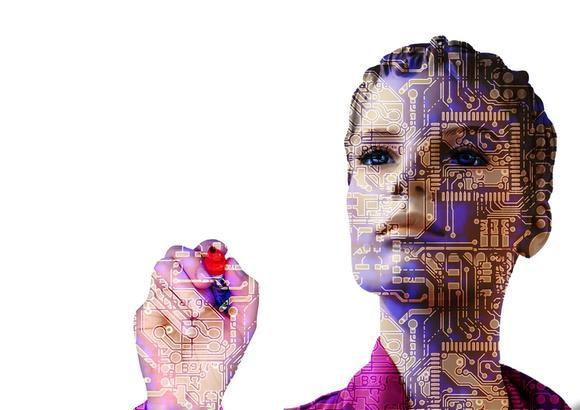
Monkeys with typewriters can write Shakespeare but can machines create anime as well as humans?
The automation of a great deal of manual labour and factory work over the past few decades has, depending on how you look at it, either deprived honest hard-working humans of their livelihood or freed millions from a life of toil to focus on more important things. In changes to the working environment unprecedented since the Industrial Revolution, machines have taken on more and more jobs once done by people. Until very recently, though, computers or pieces of industrial machinery have been limited to repetitive actions limited to the parameters of their programming. It’s hard to feel worried when the most advanced robots in the world struggle to manage something as simple as walking, stumbling all over the place like drunken toddlers. Besides, we have something that differentiates us from animals and machines, the divine spark of creativity. Computers can’t write a poem or draw a cute moe anime character, right?
Actually, that last one might be about to change.
Using Deep Learning, an analytical learning method, an undergraduate from China’s Fudan University has been attempting to create a programme that can give photographs of real people an anime-style makeover. The theory is that each iteration of the programme, with its successes and failures, informs the next, so that its ability to create anime versions of people should only ever get better. Yanghua Jin, the student behind the project (whose anime art-creating AI we also looked at last year), discussed his work at a Deep Learning workshop held in Tokyo in March this year, and his presentation can be seen in the video below.
Jin introduces the concept of Generative Adversarial Networks (GAN), and their role in improving the project’s adaptation of photographs. Simply put, GAN uses two networks, one of which (known as the generator) is focused on producing anime images from photos by using attributes taken from anime images, as in the image from the presentation below. The generator studies a number of attributes of images, such as hair or eye colour, whether the hair is long or short, and whether the mouth is opened or closed. It also recognises ‘noise’, such as the proportions of eye size to the rest of the face, or the angle at which the figure is posing. After doing this, it produces anime versions of photos in an attempt to ‘fool’ the other network, the discriminator.
The discriminator then compares the images the generator has produced against its library of images to determine whether the image is synthetic or a genuine image. The two networks learn from their mistakes, the generator gradually becoming better at producing images, while the discriminator becomes better at judging whether images are successful or not. Jin explains that CycleGAN, a form of GAN software, has often been used successfully to apply different textures onto images or footage, and is used by companies that want to visualise things like interior decorating changes. He gives the example of video footage of a horse where zebra stripes have been applied to the video by the GAN process, and also explains how the irregular, unrealistic proportions of moe anime features presents problems when working with GAN.
The early versions, and uncalibrated images, wouldn’t have many professional artists all that worried, varying from abstract swirls of colours to characters with deformed features.
But within a relatively short space of time, later generations of the GAN was producing much more realistic images, such that the naked eye might struggle to tell whether the image had been drawn by hand or computer.
Since the images should only ever improve, it’s clear that this kind of technology can be successfully applied to a number of the creative industries. While this project is the work of an undergraduate student and his anime-loving friends, the potential is obvious. Not all Japanese anime lovers, though, seemed all that upset that computers might be taking over their beloved art form.
‘The progression is so quick, at first they looked like monsters, but now…’
‘If everything becomes computer-made that would be boring, but with this kind of genre it’s all right.’
‘So computers can make images. How long until they’re writing and drawing manga?’
‘Whoa, those computer-generated moe girls are really cute.’
‘How long before the computer gets a taste for it and starts producing hentai?’
With talented artists needed to create the data sets the programme bases its work on, or to supplement them with drawings of anime boys which Yanghua Jin explains are much harder to come across online, there might still be some jobs going in the anime industry in the future. For the rest of us, our job will be to feed and maintain our robot overlords, but at least we’ll be kept entertained with anime while we do it. Those hoping to get Japanese visas for anime work might also want to get a move on.
Source: YouTube/AIP RIKEN via Jin
Top image: Pixabay
Insert images: YouTube/AIP RIKEN

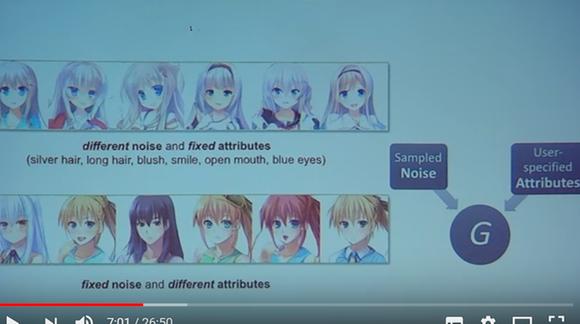
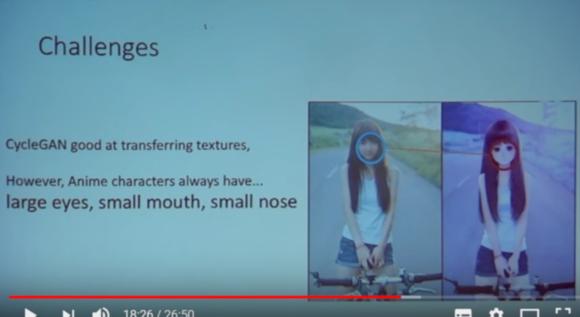
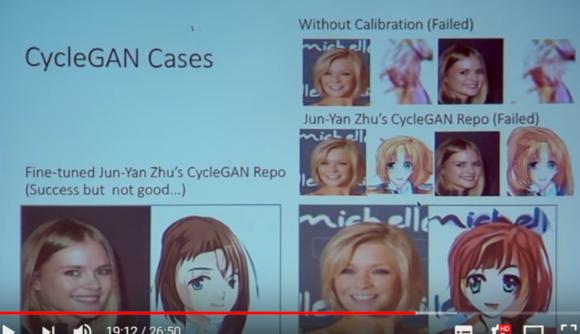
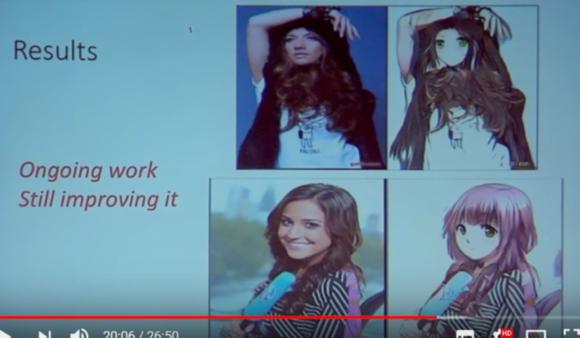
 New anime AI program animates your art for you when you add a voice clip【Videos】
New anime AI program animates your art for you when you add a voice clip【Videos】 AI website’s automatic anime character designs are cute, quick, and free for anyone to create
AI website’s automatic anime character designs are cute, quick, and free for anyone to create AI GAN project from Wuhan students turns photos or videos into gorgeous cinematic anime visuals
AI GAN project from Wuhan students turns photos or videos into gorgeous cinematic anime visuals Fake idol neural network company explains its goals: “Humans and AIs creating together”
Fake idol neural network company explains its goals: “Humans and AIs creating together” Video shows off hundreds of beautiful AI-created anime girls in less than a minute【Video】
Video shows off hundreds of beautiful AI-created anime girls in less than a minute【Video】 Disillusionment at Tsukiji’s tourist-target prices led us to a great ramen restaurant in Tokyo
Disillusionment at Tsukiji’s tourist-target prices led us to a great ramen restaurant in Tokyo Start saving room now – Japanese grocery store’s biggest sushi roll yet is coming for Setsubun
Start saving room now – Japanese grocery store’s biggest sushi roll yet is coming for Setsubun Is this the most relaxing Starbucks in Japan?
Is this the most relaxing Starbucks in Japan? U.S.A. now the fastest-growing market for Japan’s high-tech toilets, now selling quicker than ever
U.S.A. now the fastest-growing market for Japan’s high-tech toilets, now selling quicker than ever More Than a Capsule Stay: Why Solo Travelers Choose “global cabin Yokohama Chinatown”
More Than a Capsule Stay: Why Solo Travelers Choose “global cabin Yokohama Chinatown” The impossible circular staircase is just that… impossible【Video】
The impossible circular staircase is just that… impossible【Video】 7-Eleven Japan starts new temporary luggage storage service in over 300 branches
7-Eleven Japan starts new temporary luggage storage service in over 300 branches Lawson adds UFO Catcher crane games to convenience stores in Japan
Lawson adds UFO Catcher crane games to convenience stores in Japan 7-Eleven showcases its newest robots for cleaning, stocking, and customer service
7-Eleven showcases its newest robots for cleaning, stocking, and customer service Top Japanese baby names for 2025 feature flowers, colors, and a first-time-ever favorite for girls
Top Japanese baby names for 2025 feature flowers, colors, and a first-time-ever favorite for girls Starbucks teams up with 166-year-old Kyoto doll maker for Year of the Horse decorations【Photos】
Starbucks teams up with 166-year-old Kyoto doll maker for Year of the Horse decorations【Photos】 Tokyo’s Tsukiji sushi neighborhood asks tour groups to stay away for the rest of the month
Tokyo’s Tsukiji sushi neighborhood asks tour groups to stay away for the rest of the month Street Fighter Hadouken Churros to be launched and eaten in Tokyo, Okami pudding on offer too
Street Fighter Hadouken Churros to be launched and eaten in Tokyo, Okami pudding on offer too Japanese woman mistaken for bear
Japanese woman mistaken for bear Return of Totoro sequel short anime announced for Ghibli Park
Return of Totoro sequel short anime announced for Ghibli Park Starbucks Japan releases new zodiac chilled cup drink for 2026
Starbucks Japan releases new zodiac chilled cup drink for 2026 Starbucks on a Shinkansen bullet train platform: 6 tips for using the automated store in Japan
Starbucks on a Shinkansen bullet train platform: 6 tips for using the automated store in Japan Japan’s human washing machines will go on sale to general public, demos to be held in Tokyo
Japan’s human washing machines will go on sale to general public, demos to be held in Tokyo Japanese train company is letting fans buy its actual ticket gates for their homes
Japanese train company is letting fans buy its actual ticket gates for their homes Is China’s don’t-go-to-Japan warning affecting tourist crowds in Tokyo’s Asakusa neighborhood?
Is China’s don’t-go-to-Japan warning affecting tourist crowds in Tokyo’s Asakusa neighborhood? Starbucks Japan unveils new Christmas goods and a rhinestone tumbler that costs 19,500 yen
Starbucks Japan unveils new Christmas goods and a rhinestone tumbler that costs 19,500 yen Tokyo considering law requiring more trash cans following litter increase in heavily touristed area
Tokyo considering law requiring more trash cans following litter increase in heavily touristed area Nintendo’s Kirby now delivering orders at Kura Sushi restaurants, but not in Japan
Nintendo’s Kirby now delivering orders at Kura Sushi restaurants, but not in Japan Tokyo event lets you travel back in time, for free, to celebrate 100 years since Showa era start
Tokyo event lets you travel back in time, for free, to celebrate 100 years since Showa era start Survey asks foreign tourists what bothered them in Japan, more than half gave same answer
Survey asks foreign tourists what bothered them in Japan, more than half gave same answer Japan’s deadliest food claims more victims, but why do people keep eating it for New Year’s?
Japan’s deadliest food claims more victims, but why do people keep eating it for New Year’s? We deeply regret going into this tunnel on our walk in the mountains of Japan
We deeply regret going into this tunnel on our walk in the mountains of Japan Studio Ghibli releases Kodama forest spirits from Princess Mononoke to light up your home
Studio Ghibli releases Kodama forest spirits from Princess Mononoke to light up your home Major Japanese hotel chain says reservations via overseas booking sites may not be valid
Major Japanese hotel chain says reservations via overseas booking sites may not be valid Put sesame oil in your coffee? Japanese maker says it’s the best way to start your day【Taste test】
Put sesame oil in your coffee? Japanese maker says it’s the best way to start your day【Taste test】 The top 10 annoying foreign tourist behaviors on trains, as chosen by Japanese people【Survey】
The top 10 annoying foreign tourist behaviors on trains, as chosen by Japanese people【Survey】 No more using real katana for tourism activities, Japan’s National Police Agency says
No more using real katana for tourism activities, Japan’s National Police Agency says Starbucks Japan reveals new sakura drinkware collection, inspired by evening cherry blossoms
Starbucks Japan reveals new sakura drinkware collection, inspired by evening cherry blossoms
Leave a Reply